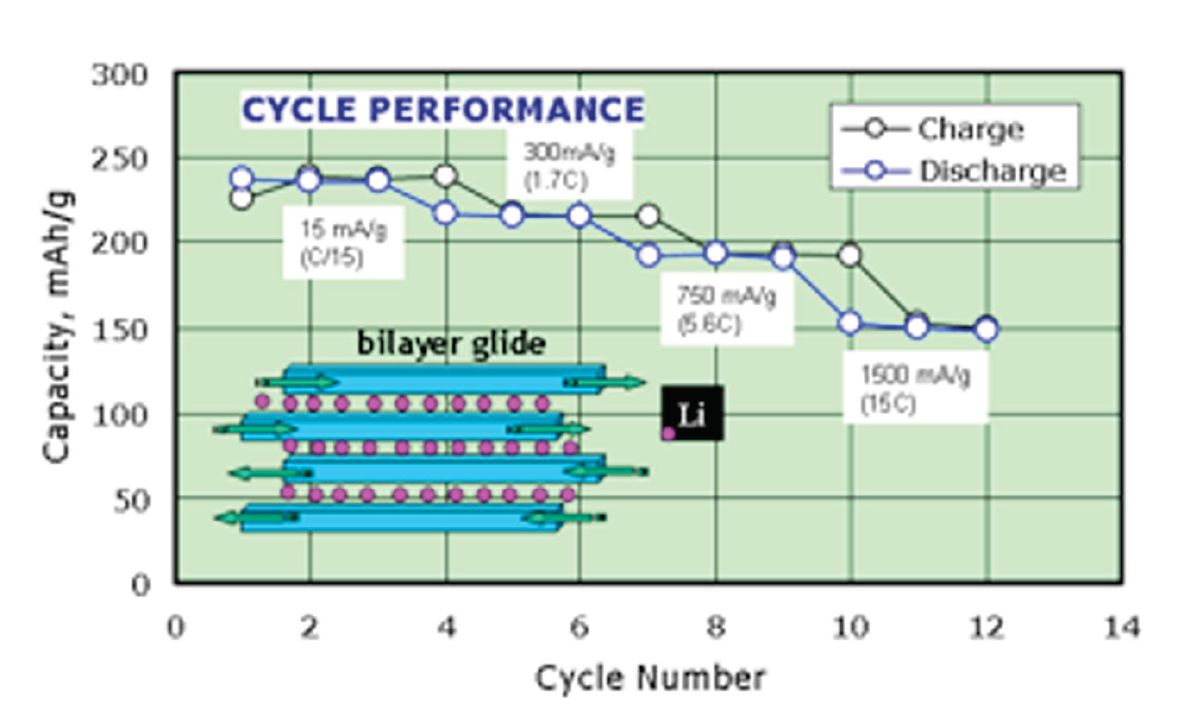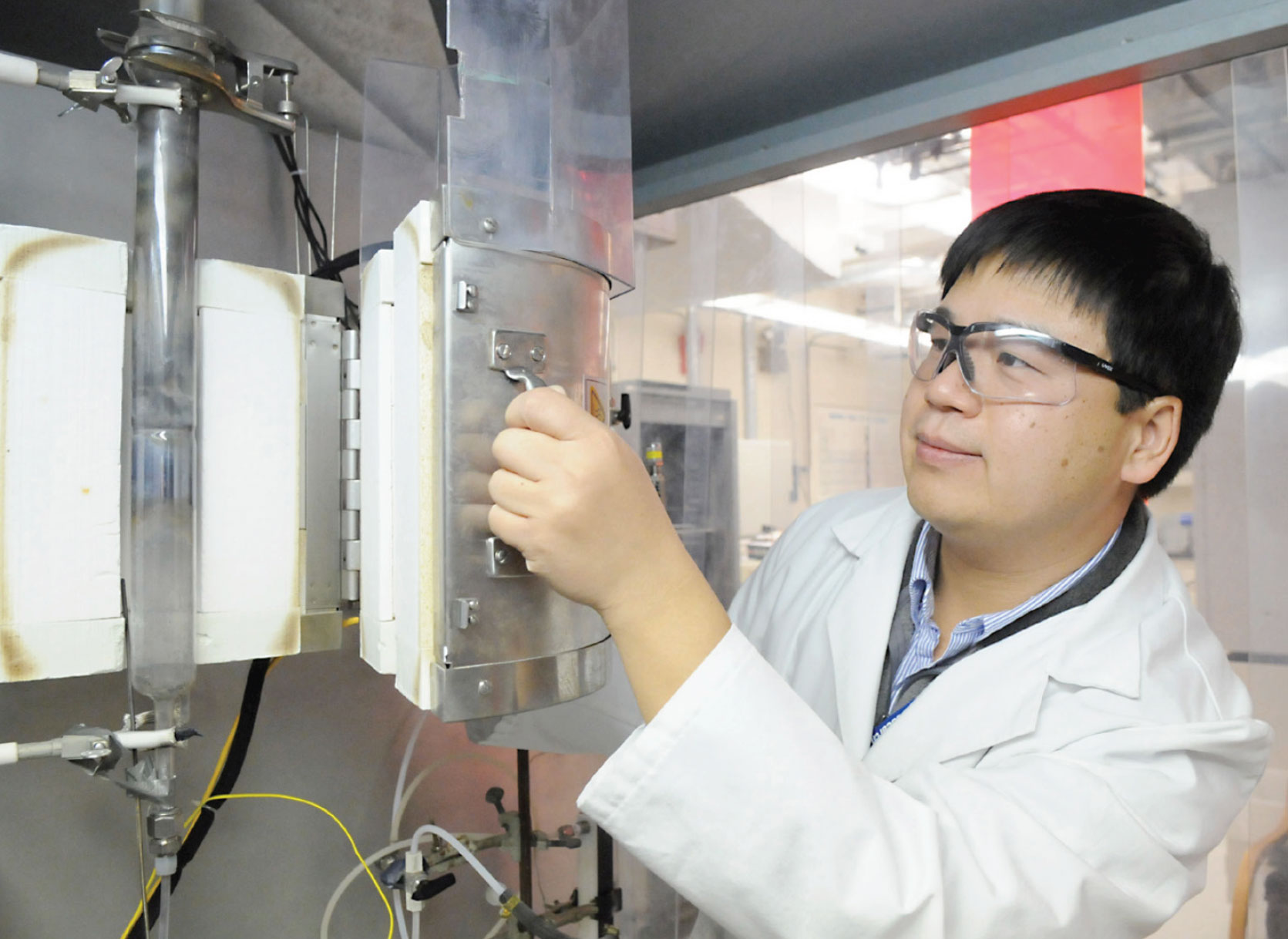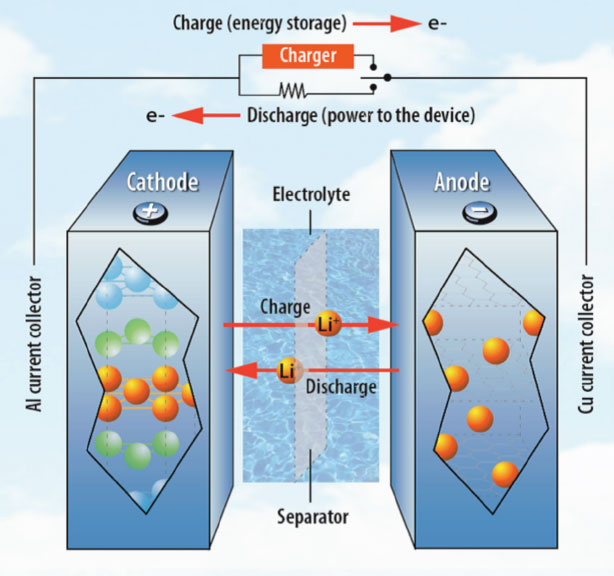- Electrode Materials for Rechargeable Li-ion Batteries: A New Synthetic Approach (ANL-IN-10-031)
The Invention
New high-energy cathode materials for use in rechargeable Li-ion cells and batteries synthesized using a novel alternative approach. These Li-ion cathode materials consist of layered transition metal containing oxides that have a unique bi-layered domain structure produced by the synthesis method. This new material allows for rapid Li intercalation/de-intercalation within the crystal, resulting in a cathode with very high rate and high-power capability. Argonne’s invention provides for new, Mn-rich compositions in these cathodes and their associated synthetic route. This layered cathode material containing low-cost Mn operates at high-rate and high-voltage, resulting in high-energy-density batteries with improved stability. These cathodes therefore offer improvements in all aspects of battery performance.
Since the performance of Li-ion batteries is largely predicated on the cathode performance in the cell, improvements to lower the irreversibility capacity loss on the first cycle, increase the rate capability, and improve structural stability at high voltages in the cathode are needed. The objective is to synthesize and make new materials to address these issues. High-energy density Li-ion batteries available in the market today have low power and progressively lose their energy due to voltage fade during cycling. This new cathode material from new synthesis methods solves problems that are associated with conventional Li-ion high-capacity (energy) batteries.
Benefits
- Higher-performance, more cost-effective batteries for PHEVs and HEVs.
- Reduced costs by lowering the number of cells needed in the battery pack and their associated hardware
- Argonne’s preparation process is simple for this new class of high-energy materials and involves only two steps so that the manufacturing cost is easier, faster, and more cost-effective.
Applications and Industries
- Electrodes used in batteries for
- Electric and plug-in hybrid electric vehicles;
- Portable electronic devices;
- Medical devices; and
- Space, aeronautical, and defense-related devices.
Developmental Stage
Baseline materials are patented and have been implemented in full cells.



